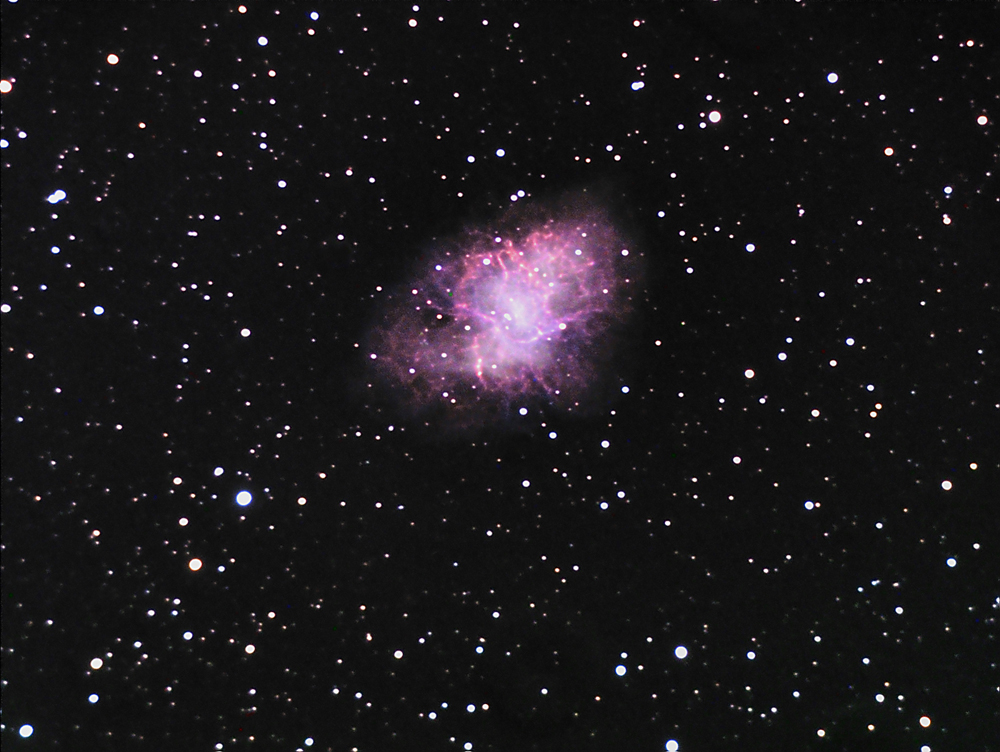
Supernova remnant in Taurus
On July 4, 1054, there were celestial fireworks. A "new star" appeared in the constellation Taurus, and it was so bright it could be seen during the daytime. Eventually, the star faded from view. But centuries later, when Messier viewed that area of the sky with his telescope, he observed what became the first object in his famous catalog. Messier did not know it, but the faint smudge of light that he saw was the remant of the stellar explosion. The nebula's irregular outline when viewed through a large telescope gave rise to its nickname, the Crab Nebula.
This is how stars several times more massive than our Sun end their lives--in a massive explosion called a supernova. At the center of the Crab Nebula is what remains of the orignal star, a dense neutron star called a pulsar, which is spinning at the incredible rate of 30 times a second, sending pulses of radio waves at that rate into the universe.
| Magnitude | 8.4 |
| Apparent Size | 7' x 4' |
| Distance (light yrs) | 6,500 |
| Right Ascension | 5:34.5 |
| Declination | +22 01 |
Image details: Exposure times of 24 minutes luminance and 6 minutes each of red, green and blue, taken with an SBIG ST-8300M image and a Meade 12” telescope at f/10.
December 2012